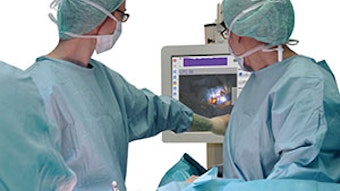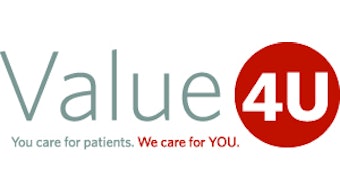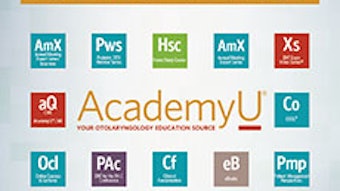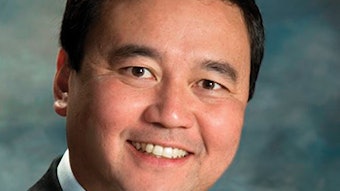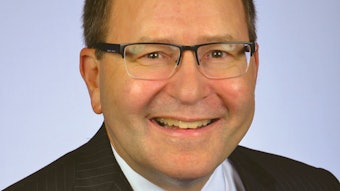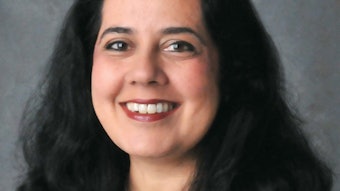Regent℠ progress report
AAO-HSNF’s first clinical data registry takes shape with pilot, quality measures, and governance We last provided a comprehensive update of RegentSM in the December/January Bulletin as part of the AAO-HNS Annual Report. In the past three months, the Foundation has made tremendous strides in the construction of Regent, including the recruitment of pilot sites, development of measures and the Regent data dictionary, and the creation of a governance structure. Additionally, the AAO-HNSF has filed with the Centers for Medicare & Medicaid Services (CMS) to allow practitioners to report quality data to CMS. We welcome this opportunity to provide you a detailed update on Regent, the Otolaryngology Clinical Data Registry. Regent pilot The Regent pilot is officially underway and AAO-HNSF staff is working closely with our vendor, FIGmd, Inc., to orient and process 38 diverse sites that represent the depth and breadth of otolaryngology practice settings, including hospital-based practices, academic medical center practices, and private practitioners. This pilot phase is a critical step in the development of Regent and will enable the AAO-HNSF to test its performance measures, ensure accuracy and reliability of extracted data, increase our understanding of practices’ needs for educational tools and resources, and identify and solve any roadblocks encountered along the way. The pilot will also ensure that the appropriate technology architecture and practice support are in place prior to the full-scale launch of Regent. In recruiting sites for our pilot, we had very specific needs for a diversity of sites and electronic health records (EHRs). The response to our recruiting efforts was overwhelming. The AAO-HNSF received a large number of requests and FIGmd recommended setting a limit of 35 to 40 site participants for the pilot. We deeply thank all of our Members for the overwhelming demonstration of support and commitment to Regent and look forward to working with each of you in the future. Also, for Members who had their badges scanned as part of the Regent Miniseminar or at the Regent Booth at the 2015 AAO-HNSF Annual Meeting & OTO EXPOSM, and expressed interest in the free one-year participation in Regent, we will be contacting each of you this spring—well before the Regent pilot concludes—with instructions and deadlines for securing this offer for the full launch of Regent in mid-2016. Quality measures and Regent Thanks to guidance from Richard M. Rosenfeld, MD, MPH, Performance Measures Task Force chair, Lisa Ishii, MD, MHS, former chair of the Registry Task Force and member of the Regent Executive Committee, feedback from the Large Group Forum, AAO-HNSF, and input provided by James C. Denneny III, MD, staff quickly refined the final list of Regent pilot measures and specified six new outcome measure options for our Members to utilize in Regent. Staff worked extensively with FIGmd to create the data dictionary of all required data elements to support the extraction and reporting of the measures in a registry environment. The final list of pilot measures includes 30 current PQRS measures and 12 non-PQRS measures. In addition to existing otitis media with effusion (OME) measures, the non-PQRS measures comprise a new measure regarding the avoidance of intranasal corticosteroids for OME, as well as newly developed outcomes measures, including the resolution of OME after tympanostomy tube placement and four new tonsillectomy outcomes measures, addressing primary and secondary post-tonsillectomy hemorrhage in both children and adults. It is important to note that quality reporting to CMS is just the first phase of the registry and that measure development is now an ongoing activity. With the creation of the governance structure and seven advisory specialty groups, the goal is to have meaningful quality measures in place for our entire membership. Visit www.entnet.org/regent to view the measures contained in Regent. Quality reporting to CMS with Regent AAO-HNSF staff also completed the required application materials and submitted to CMS to secure both Qualified Clinical Data Registry and PQRS Qualified Registry Status for Regent. These materials were submitted in advance of the deadline of January 31, and included the provision of data validation plans, a series of attestations, a complete list of measures, and detailed specifications for each non-PQRS measure. The AAO-HNSF anticipates a response from CMS in early spring regarding the status of our application. Regent has also been constructed with the future in mind to support future measures reporting needs under the Merit-Based Incentive Payment System (MIPS) and other quality reporting programs. Governance and oversight The Executive Committee of the AAO-HNSF approved the governance structure and the appointment of the following individuals to the Regent Executive Committee: James C. Denneny III, MD, chair William R. Blythe, MD Michael G. Glenn, MD Lisa E. Ishii, MD, MHS Melissa A. Pynnonen, MD Jennifer J. Shin, MD, SM Lauren S. Zaretsky, MD Robert H. Miller, MD, MBA, ex-officio The Regent Executive Committee will have responsibility for strategic planning, priorities, and goal setting, while also monitoring the regulatory environment, governing the data contained in Regent, and overseeing quality improvement efforts. In the near term, it is anticipated that the Executive Committee will be actively involved in oversight of the Regent pilot and will be working to develop policies and procedures for critical aspects of Regent prior to its full launch in the summer of 2016. We look forward to the future growth and development of Regent and to reporting pilot results before the AAO-HNSF Annual Meeting & OTO EXPOSM September 18-21 in San Diego. In the meantime, make sure to visit www.entnet.org/regent to stay up to date. If you have any questions, please email regent@entnet.org.
AAO-HSNF’s first clinical data registry takes shape with pilot, quality measures, and governance

Regent pilot
The Regent pilot is officially underway and AAO-HNSF staff is working closely with our vendor, FIGmd, Inc., to orient and process 38 diverse sites that represent the depth and breadth of otolaryngology practice settings, including hospital-based practices, academic medical center practices, and private practitioners. This pilot phase is a critical step in the development of Regent and will enable the AAO-HNSF to test its performance measures, ensure accuracy and reliability of extracted data, increase our understanding of practices’ needs for educational tools and resources, and identify and solve any roadblocks encountered along the way. The pilot will also ensure that the appropriate technology architecture and practice support are in place prior to the full-scale launch of Regent.
In recruiting sites for our pilot, we had very specific needs for a diversity of sites and electronic health records (EHRs). The response to our recruiting efforts was overwhelming. The AAO-HNSF received a large number of requests and FIGmd recommended setting a limit of 35 to 40 site participants for the pilot. We deeply thank all of our Members for the overwhelming demonstration of support and commitment to Regent and look forward to working with each of you in the future.
Also, for Members who had their badges scanned as part of the Regent Miniseminar or at the Regent Booth at the 2015 AAO-HNSF Annual Meeting & OTO EXPOSM, and expressed interest in the free one-year participation in Regent, we will be contacting each of you this spring—well before the Regent pilot concludes—with instructions and deadlines for securing this offer for the full launch of Regent in mid-2016.
Quality measures and Regent
Thanks to guidance from Richard M. Rosenfeld, MD, MPH, Performance Measures Task Force chair, Lisa Ishii, MD, MHS, former chair of the Registry Task Force and member of the Regent Executive Committee, feedback from the Large Group Forum, AAO-HNSF, and input provided by James C. Denneny III, MD, staff quickly refined the final list of Regent pilot measures and specified six new outcome measure options for our Members to utilize in Regent. Staff worked extensively with FIGmd to create the data dictionary of all required data elements to support the extraction and reporting of the measures in a registry environment. The final list of pilot measures includes 30 current PQRS measures and 12 non-PQRS measures. In addition to existing otitis media with effusion (OME) measures, the non-PQRS measures comprise a new measure regarding the avoidance of intranasal corticosteroids for OME, as well as newly developed outcomes measures, including the resolution of OME after tympanostomy tube placement and four new tonsillectomy outcomes measures, addressing primary and secondary post-tonsillectomy hemorrhage in both children and adults. It is important to note that quality reporting to CMS is just the first phase of the registry and that measure development is now an ongoing activity. With the creation of the governance structure and seven advisory specialty groups, the goal is to have meaningful quality measures in place for our entire membership. Visit www.entnet.org/regent to view the measures contained in Regent.
Quality reporting to CMS with Regent
AAO-HNSF staff also completed the required application materials and submitted to CMS to secure both Qualified Clinical Data Registry and PQRS Qualified Registry Status for Regent. These materials were submitted in advance of the deadline of January 31, and included the provision of data validation plans, a series of attestations, a complete list of measures, and detailed specifications for each non-PQRS measure. The AAO-HNSF anticipates a response from CMS in early spring regarding the status of our application. Regent has also been constructed with the future in mind to support future measures reporting needs under the Merit-Based Incentive Payment System (MIPS) and other quality reporting programs.
Governance and oversight
The Executive Committee of the AAO-HNSF approved the governance structure and the appointment of the following individuals to the Regent Executive Committee:
- James C. Denneny III, MD, chair
- William R. Blythe, MD
- Michael G. Glenn, MD
- Lisa E. Ishii, MD, MHS
- Melissa A. Pynnonen, MD
- Jennifer J. Shin, MD, SM
- Lauren S. Zaretsky, MD
- Robert H. Miller, MD, MBA, ex-officio
The Regent Executive Committee will have responsibility for strategic planning, priorities, and goal setting, while also monitoring the regulatory environment, governing the data contained in Regent, and overseeing quality improvement efforts. In the near term, it is anticipated that the Executive Committee will be actively involved in oversight of the Regent pilot and will be working to develop policies and procedures for critical aspects of Regent prior to its full launch in the summer of 2016.
We look forward to the future growth and development of Regent and to reporting pilot results before the AAO-HNSF Annual Meeting & OTO EXPOSM September 18-21 in San Diego. In the meantime, make sure to visit www.entnet.org/regent to stay up to date. If you have any questions, please email regent@entnet.org.



